
Beef tenderloin is the most prized and costliest beef cut because it's the most tender and has exceptional flavor, yet it's still fairly lean. This part of the cow does well with broiling, a convenient, simple, hands-off cooking method with minimal cleanup. If you have a whole tenderloin roast, cut it into approximately 2-inch thick steaks to broil. If you already have tenderloin steak cuts -- these would be filet mignon or tournedo steaks -- then you're already set for broiling.
Step 1
Take out the broiling pan from the bottom compartment of your oven. Remove the top piece, line the bottom of the pan with aluminum foil, then put the rack back on and lightly grease it with nonstick cooking spray or cooking oil. Turn the broiler on to preheat about 10 minutes before putting the tenderloin steaks in.
Step 2
Season the pieces of beef tenderloin with salt, pepper and any other herbs and spices you want to use. If you like your steak to have a little kick, sprinkle on some cayenne powder, curry powder or Cajun seasonings. Dried thyme or rosemary also work well, or brush the top of the steaks with a light coating of barbecue, teriyaki or soy sauce. Don't be heavy-handed, though, or you'll mask the beef's natural flavor.
Step 3
Place the steaks on the broiling pan's rack. Insert the broiling pan into the broiler, positioned so the top surface of 1-inch-thick tenderloin steaks are 3 inches below the heat source, 2-inch-thick steaks are 4 inches beneath the heat and 3-inch-thick cuts are 5 inches under the heat.
Step 4
Broil 1-inch-thick steaks for about 15 minutes, turning them over once halfway through, to bring them to 145 degrees Fahrenheit, or approximately medium, the internal temperature recommended by the USDA. Thicker steaks need a little more time. Use a meat thermometer to gauge doneness. If you prefer your steaks cooked differently, cook to 120 F for rare, 130 F for medium-rare, 150 F for medium-well or 160 F for well done.
Step 5
Remove the tenderloin steaks from the broiling pan promptly to prevent overcooking them. Move them onto a plate to rest for about 10 minutes so the internal juices can be reabsorbed into the muscle fibers. Otherwise, they leak out when you slice the meat, depriving it of flavor and juiciness.
Related Articles

How to Cook a Breaded Thick Cube Steak

Easy Ways to Cook Pork Steak

How to Cook a Rib Eye to Medium-Well in ...
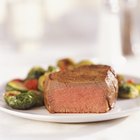
How to Cook Steak on a Baking Sheet

How to Cook Marinated Pork Loin From a ...
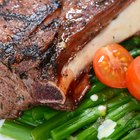
How to Cook Venison Backstrap Steaks on ...

How to Pan Cook Shark
How to Cook Boneless Top Chuck Steak in ...

How to Cook Deer Sirloin
How to Cook Goat Steak
How to Cook Double Thickness Rib Lamb ...

How to Cook Axis Deer Steaks

How Do I Cook a Tuna Steak Without ...

How to Cook Kobe Steaks
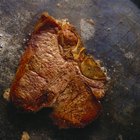
How to Cook Churrasco Steak in a Pan
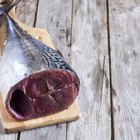
How to Smoke Tuna

How to Grill a Ribeye on a Weber Q
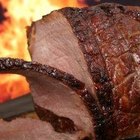
How to BBQ the Eye of Round Roast
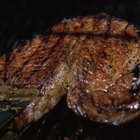
How to Make Oven-Broiled Marinated ...

How to Roast Italian Sausage
References
Tips
- Refrigerate your beef tenderloin until cooking to keep it out of the bacterial "danger zone," which is above 40 F. If you cut a tenderloin roast into multiple steaks and aren't going to cook them all within three to five days of purchase, wrap the leftovers in airtight packaging and freeze them.
Writer Bio
Eric Mohrman is a food and drink, travel, and lifestyle writer living in Orlando, Florida. He has professional experience to complement his love of cooking and eating, having worked for 10 years both front- and back-of-house in casual and fine dining restaurants. He has written print and web pieces on food and drink topics for Visit Florida, Orlando Style Magazine, CrushBrew Magazine, Agent Magazine, Dollar Stretcher Magazine, The 863 Magazine and other publications.
Photo Credits
Jupiterimages/Stockbyte/Getty Images